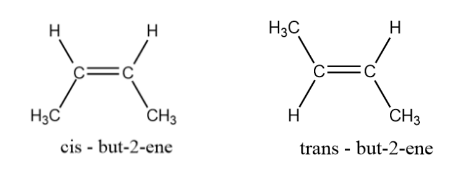Answer
64.8k+ views
Hint: A chiral carbon indicates the presence of optical activity around the central carbon. The mirror image of an optically active compound should not superimpose over the original image. So, if the same groups or atoms are attached the mirror image will not be unique.
Complete step-by-step answer:
The word “isomer” is derived from the Greek words "isos" and "mers". "Isos" means equal and "mers" means parts, so "isomers" means equal parts.
Isomerism is the phenomenon in which two or more compounds have the same chemical formula but differ in chemical structures. Chemical compounds that have identical chemical formulas but differ in properties and the arrangement of atoms in the molecule are called isomers i.e. they exhibit isomerism.
Isomerism is of two types namely, Structural isomerism and stereoisomerism.
In stereoisomerism, the compounds have the same chemical formula but differ in their respective orientations of the atoms belonging to the compound in a 3D space.
The types of stereoisomerism are:
- Geometrical
- Optical
Optical isomers are two compounds having the same molecular formula but differ in their spatial arrangements of atoms, which have non-superimposable mirror images.
Since the mirror images are not the same, the groups around the chiral carbon must be different in order to satisfy the above condition. So Chiral carbon is carbon in which all four valencies are satisfied with four different atoms or groups of atoms.
Therefore, the correct answer is option (A).
Note: Geometrical isomerism is popularly known as cis-trans isomerism.
Geometrical isomers have different spatial arrangements of atoms present in the compound in a 3D space. Given below is an example of pair of isomers exhibiting geometrical isomerism:

Complete step-by-step answer:
The word “isomer” is derived from the Greek words "isos" and "mers". "Isos" means equal and "mers" means parts, so "isomers" means equal parts.
Isomerism is the phenomenon in which two or more compounds have the same chemical formula but differ in chemical structures. Chemical compounds that have identical chemical formulas but differ in properties and the arrangement of atoms in the molecule are called isomers i.e. they exhibit isomerism.
Isomerism is of two types namely, Structural isomerism and stereoisomerism.
In stereoisomerism, the compounds have the same chemical formula but differ in their respective orientations of the atoms belonging to the compound in a 3D space.
The types of stereoisomerism are:
- Geometrical
- Optical
Optical isomers are two compounds having the same molecular formula but differ in their spatial arrangements of atoms, which have non-superimposable mirror images.
Since the mirror images are not the same, the groups around the chiral carbon must be different in order to satisfy the above condition. So Chiral carbon is carbon in which all four valencies are satisfied with four different atoms or groups of atoms.
Therefore, the correct answer is option (A).
Note: Geometrical isomerism is popularly known as cis-trans isomerism.
Geometrical isomers have different spatial arrangements of atoms present in the compound in a 3D space. Given below is an example of pair of isomers exhibiting geometrical isomerism:

Recently Updated Pages
Write a composition in approximately 450 500 words class 10 english JEE_Main

Arrange the sentences P Q R between S1 and S5 such class 10 english JEE_Main

What is the common property of the oxides CONO and class 10 chemistry JEE_Main

What happens when dilute hydrochloric acid is added class 10 chemistry JEE_Main

If four points A63B 35C4 2 and Dx3x are given in such class 10 maths JEE_Main

The area of square inscribed in a circle of diameter class 10 maths JEE_Main

Other Pages
A boat takes 2 hours to go 8 km and come back to a class 11 physics JEE_Main

In the ground state an element has 13 electrons in class 11 chemistry JEE_Main

Differentiate between homogeneous and heterogeneous class 12 chemistry JEE_Main

Electric field due to uniformly charged sphere class 12 physics JEE_Main

According to classical free electron theory A There class 11 physics JEE_Main

Excluding stoppages the speed of a bus is 54 kmph and class 11 maths JEE_Main



